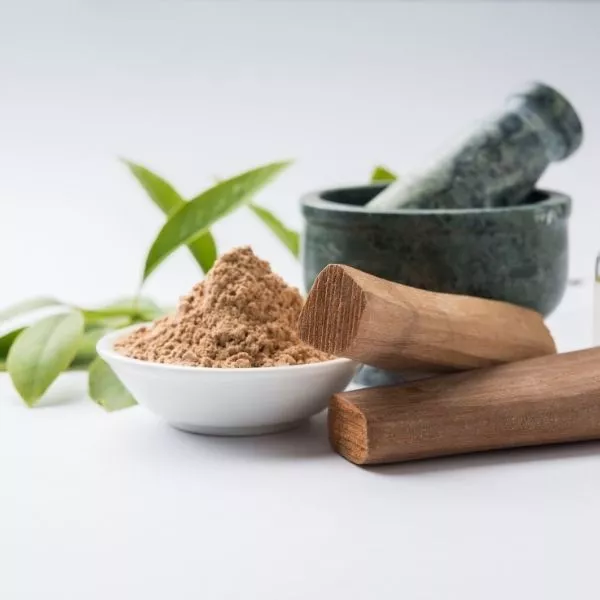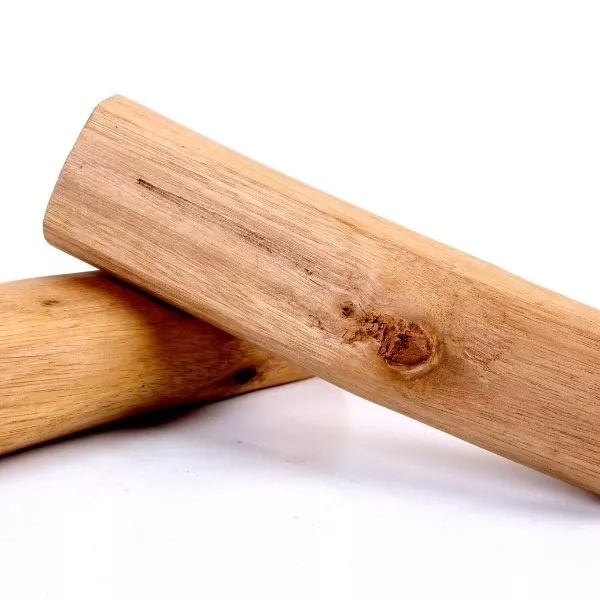Red Sandal Wood (5 Seeds)
₹25.0
Red sandalwood grows as a tree and is used for medicinal and aromatic uses. The wood at the center of the trunk (heartwood) and the bark are used as medicine. Try your hands out on one of the most auspicious seeds. Also, check out our workshops for more details.
PRODUCT DESCRIPTION
Number of seeds in a packet – 5
PLANT DESCRIPTION
- Difficulty level – easy
- Plant Height – 5 – 8 metres
- Type – outdoor
- Feed – VermiCompost for nutrients every week, Seaweed once a month for greener leaves and Epsom salt for better blooming once a month
- Watering – twice per week
- Sunlight – full sunlight
- Germination Time – 45 days
- Suitable Temperature – 68°F – 104°F
- Season – perennial
- Sowing – may – june
HOW TO GROW RED SANDAL WOOD FROM SEEDS
- Take a small shovel or a trowel. Create a planting hole that is 30 by 3 centimeters (11 by 1 inches).
- When the seedlings are around 1 month old, transplant them.
- Plant the sandalwood seedlings within 1 meter (3.3 feet) of the host plants.
- Remove any weeds that are competing for moisture around the sandalwood tree, especially during the first year.
ALTERNATE METHOD
- Take a Medium Size Pot and add a Potting Mix.
- If planting in the soil adds Neem Cake Powder, VermiCompost, and Seaweed.
ALTERNATE NAMES
Botanical name: Pterocarpus santalinus
red sandal wood seed in hindi: laal chandan ka paudha (लाल चंदन का पौधा)
red sandal wood seed in kannada: kempu śrīgandhada giḍa (ಕೆಂಪು ಶ್ರೀಗಂಧದ ಗಿಡ)
red sandal wood seed in tamil: civappu cantaṉa ceṭi (சிவப்பு சந்தன செடி)
red sandal wood seed in telugu: erra candanaṁ mokka (ఎర్ర చందనం మొక్క)
red sandal wood seed in marathi: lāla candanācī vanaspatī (लाल चंदनाची वनस्पती)
red sandal wood seed in malayalam: cuvanna candana ceṭi (ചുവന്ന ചന്ദന ചെടി)
Other names: Red sanders, Red saunders, Yerra Chandanam, Chenchandanam, Red sandalwood, Rakta Chandana, and saunderswood.
You must be logged in to post a review.
Q & A
The sustainability of organic herbal seeds depends on several factors, including the farming practices used, seed quality, environmental impact, and market demand. Here are some key points to consider:
Organic farming practices: Organic herbal seeds are typically grown using organic farming methods, which prioritize soil health, biodiversity, and the use of natural inputs. These practices help maintain the long-term sustainability of the soil and reduce the reliance on synthetic fertilizers and pesticides.
Preservation of genetic diversity: Organic herbal seed production plays a crucial role in preserving genetic diversity. By growing and saving organic seeds, farmers contribute to the conservation of heirloom and open-pollinated varieties that may be resilient to environmental changes and provide valuable genetic resources for future generations.
Avoidance of synthetic chemicals: Organic herbal seeds are grown without the use of synthetic chemicals, such as synthetic fertilizers, pesticides, and genetically modified organisms (GMOs). This reduces the environmental impact associated with chemical runoff, soil degradation, and potential health risks for farmers and consumers.
Soil health and regeneration: Organic farming practices, including the use of compost, crop rotation, and cover cropping, help improve soil fertility, structure, and water retention. Healthy soils are essential for sustainable agriculture and contribute to the long-term viability of organic herbal seed production.
Market demand and economic viability: The sustainability of organic herbal seeds also depends on market demand and the economic viability of organic farming. If there is a consistent demand for organic products and farmers can receive fair prices for their organic seeds, it creates incentives for continued production and supports the sustainability of the organic seed sector.
Certification and regulation: Organic herbal seeds are often certified by regulatory bodies to ensure compliance with organic standards. Certification programs help maintain transparency and consumer trust, as they provide assurance that the seeds have been produced following specific guidelines and regulations.
Overall, the sustainability of organic herbal seeds is closely tied to environmentally friendly farming practices, genetic diversity preservation, soil health, market demand, and adherence to organic standards. By supporting organic agriculture and purchasing organic herbal seeds, individuals can contribute to a more sustainable and resilient food system.
General Inquiries
There are no inquiries yet.




Reviews
There are no reviews yet.